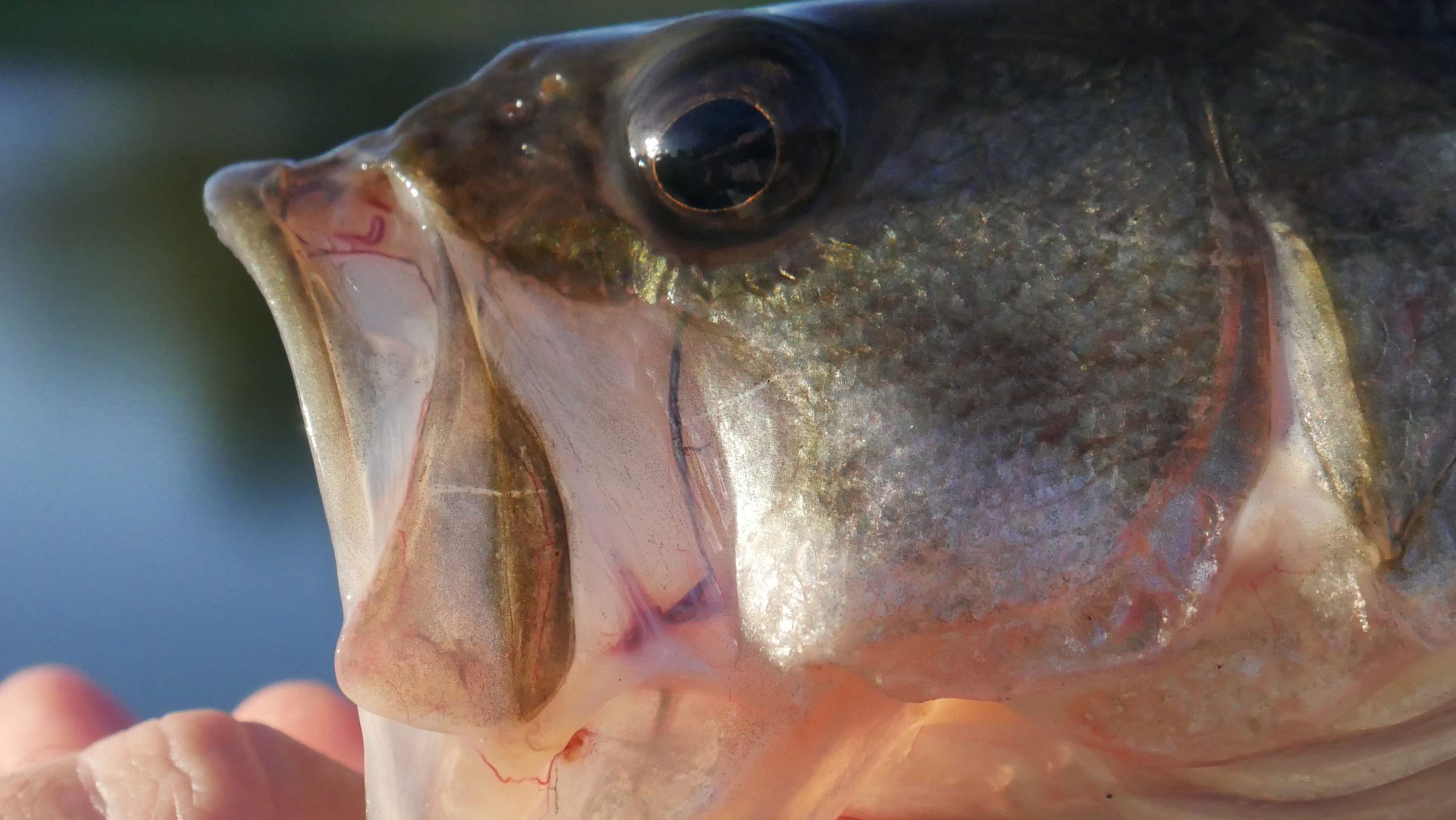Consistently named the top game fish in North America, largemouth bass are perhaps the best “gateway” to the drug that is the tug. Readily found in nearly every state, largemouth give anglers of all skill levels an easy opportunity to test their angling abilities against a formidable foe.
They go by many names- greenfish, lunker, widemouth, bucketmouth, bigmouth, and, most hilariously, ditch pickles.
Largemouth bass are, for all intensive purposes, a rather easy species to target. With a native range extending across much of the U.S., and their introduction to numerous states and countries around the world, the chances of landing a greenfish have never been better.
Thanks in large part to their aggressive feeding habits, largemouth bass are relatively easy to trick into eating, and will happily take numerous offerings. Bass, as a whole, are opportunistic feeders, and will consume nearly anything that will fit in their cavernous mouths, with forage ranging from smaller baitfish all the way up to unsuspecting ducklings.
Given their eagerness to strike nearly any offering that crosses their path, largemouth bass are somewhat maligned in fly fishing circles, often being compared to the likes of Forrest Gump, Homer Simpson, and Ralph Wiggum.
However, under this guise of relative stupidity, beats the heart of a true predator, one that will do whatever it takes to survive. While dinks, or smaller largemouths, are easy to fool, landing a trophy lunker can prove to be quite the challenge. Less than three percent of the bass population tips the scale at seven pounds or more, and honestly, you don’t get that big being dumb. For fly fishermen ready to test their hand with largemouths, here is a quick introduction to the species along with the gear you will need to get you on the water.
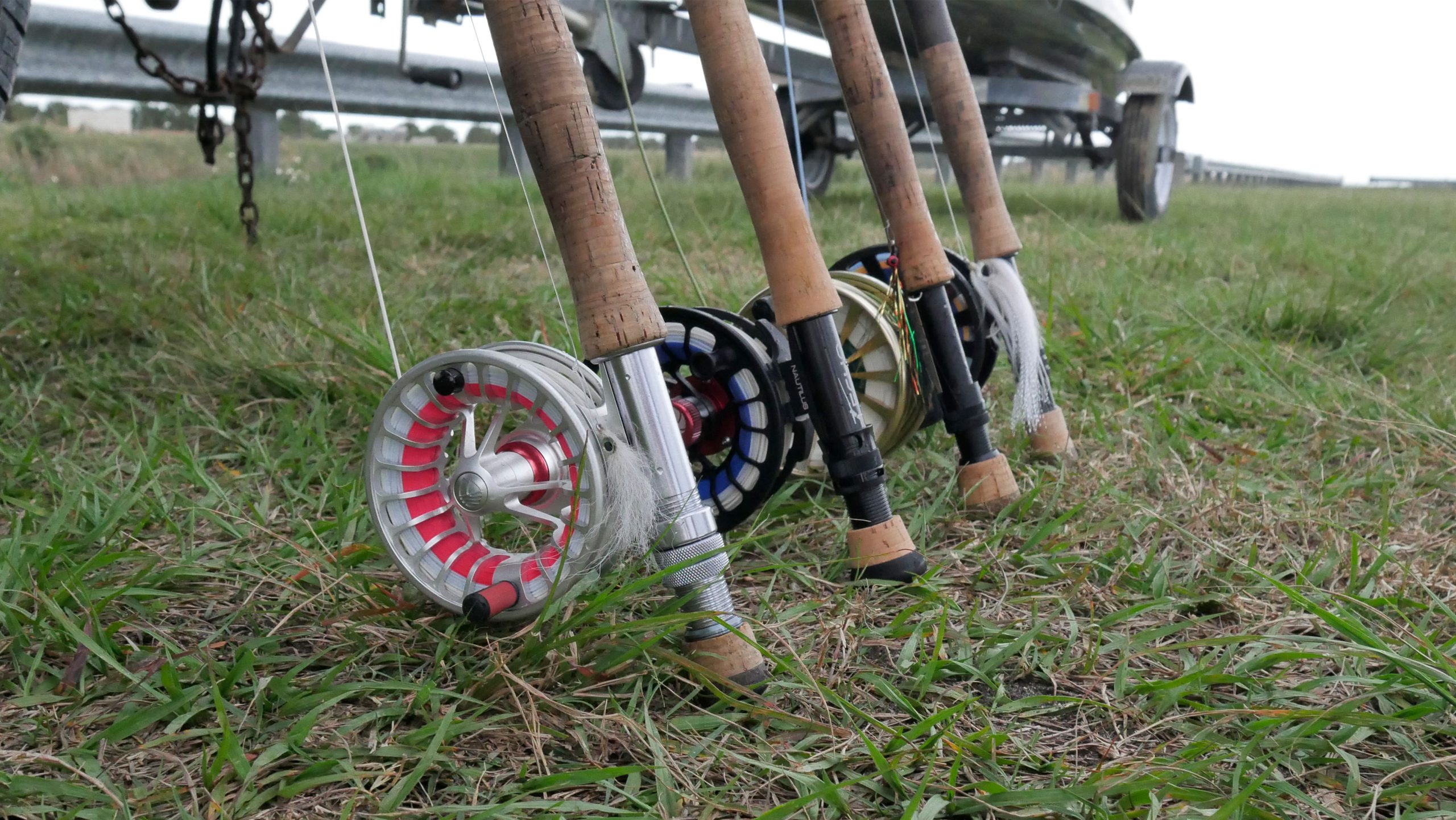
THE RIGHT ROD
There are several factors that come into play when selecting the proper rod and reel setup. Variables such as weather conditions, targeted points of interest, familiarity of the water, available prey items, and water depth and clarity must all be considered before stepping foot out on the water.
For those new to fly fishing for bass, or new to fly fishing in general, the most universally accepted bass setup is a fast action 9’ 8wt. The reason for this simple, this setup can handle multiple situational variables while giving anglers the ability to utilize a wide variety of presentations. In inexperienced hands, it is forgiving enough to make mistakes, for those less novice, it can prove to be a valuable tool when pushing the envelope.
Although you can catch bass on nearly any weight and setup, the truth of the matter is that unless you have intimate knowledge of the water and the average size of fish you expect to encounter, or the experience necessary to properly land fish on light weights, an 8wt is your best option.
Being able to build your knowledge of the species and the waters they inhabit is critical. For anglers in regions such as South Florida, the prospect of possible bycatch such as snakeheads, snook, bowfin, and even tarpon, must come into play when choosing the right setup. No angler wants to lose an opportunity to land whatever they may encounter. Likewise, no one wants to be throwing heavier rods when expected largemouths and probable bycatch average less than 5lbs.
When approaching largemouth bass from an enthusiast’s standpoint, gear selection can become a highly specialized affair, with multiple setups covering various conditions and presentations.
It’s not uncommon to find serious largemouth fly fishermen geared up with multiple rods varying from the venerable 5wt, all the way up to tarpon-tested 10wts. The reason behind such a wide breadth of weights is simple, it affords anglers the ability to properly adjust to any technique and allows them to best implement their knowledge and experience, the details of which will be discussed further upon later in this article.

THE TRUTH ABOUT REELS
While it’s always a good idea to purchase a reel with the beefiest drag possible, a majority of bass are rarely brought to the reel when fighting, and anglers shouldn’t get caught up in spending a heap of money on a fancy reel they’ll rarely take advantage of. Find a quality reel at a reasonable price, stepping up to higher-end offerings as your acumen builds.
PROPER LINE
Floating lines are the most common when targeting largemouth bass, as most encounters with the species typically occur in shallow water or around cover where terrestrial prey items are readily available.
Much like your rod selection, choosing the right fly line is imperative, with multiple factors coming into play. While there are seemingly endless choices for floating lines, with options ranging from less than $10, all the way up to nearly $150, it is important to purchase a line with a powerful head to turn over large flies that is also suitable for your climate. For those in warmer climates, saltwater lines could be the best option.
When working deep water structures such as channels and deep pockets, or cover such as submerged logs, specialized sinking lines would be the best option, allowing anglers to get their flies down quickly.
It is important to note that a majority of largemouth waters are inherently scummy in nature, with algae and other forms of vegetation being common, which can quickly gum up line, decreasing distance and accuracy. Make sure to regularly clean and dress your line.

LEADER LOGIC
This is perhaps the most important factor when it comes to largemouth bass fishing. Choosing the right leader can make or break your day, so it’s not a decision to take lightly.
There are two important variables to take under consideration when selecting the right leader. First what cover and structure will you encounter? And second, what are the size of the fish you may encounter?
When fishing areas with heavy vegetation and numerous submerged obstacles, it’s time to beef up your tippet. For most situations, a 15- to 20lb fluorocarbon tippet would be your best option, allowing you to wrangle bass out of cover. Unless you’re fishing in crystal clear water, only the most discerning of largemouth will shy away from the heavier line.
The type of vegetation present will also play a large role in leader selection. Bodies of water with large amounts of algae on the surface can wreak havoc on custom tied lines, with each knot eventually becoming gunked over. In this situation, anglers should option for store bought leaders, as their one piece design stops the buildup of slimy, action-robbing hitchhikers.
As a general rule of thumb for largemouth on the fly, your tippet should stay in the 10- to 15lb range. Unless you’re fishing a backyard pond with little cover and structure that is absolutely certified to hold only small panfish and bass, most situations dictate your tippet staying in the suggested range. You don’t want to be outgunned and overmatched when fighting a nice fish or potential fly stealing bycatch.
A 9’ leader is the most commonly accepted leader length, with specialists dropping up and down in length depending on technique and conditions. If you’re throwing heavier clouser minnows, or are experiencing tough winds, you may want to “choke down” the size of your leader.
If you’re building your own leader, utilize the 60/20/20 rule, with a heavy mono butt section that matches the diameter of your fly line.
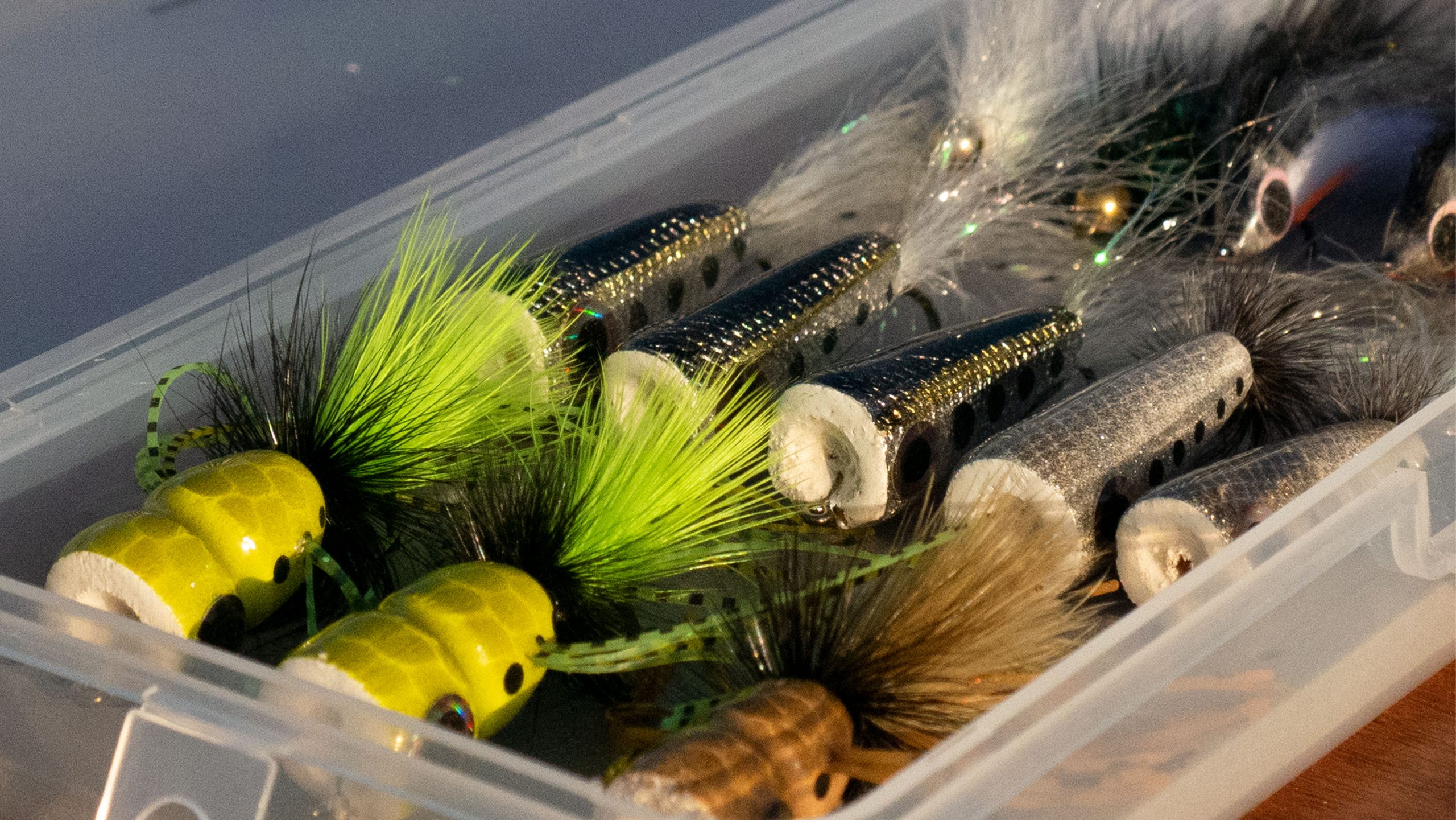
FLY SELECTION
Largemouth bass are aggressive predators and are typically willing to eat a large variety of flies. With this said, there are still numerous factors that need to be considered before hitting the water. This includes, but is not limited to: What is the available forage in this body of water? What are the weather conditions? What is the water clarity? What points of interest am I targeting?
Try your best to research and identify possible prey items when selecting flies. Nearly every body of water contains the same prey items- frogs, insects, small, medium, and large baitfish- but it’s up to you to be able to recognize the proper species. Being able to do so will dramatically increase your hook-up rates.
In low-light or dark water conditions, you would be best served by throwing a darker hued offering with muted flash colors. On bright sunny days, or in clearer waters, offer up a lighter colored fly with plenty of shiny flash.
Baitfish patterns such as clouser minnows, deceivers, and woolly buggers are excellent choices for subsurface presentations. Surface flies will work best near cover like lily pads, with the top choices being gurglers, stealth bombers, and various popper and frog patterns.
It is important to note that only a handful of things rival a big topwater largemouth bass blow up.
For more advanced anglers, don’t be afraid to throw tandem rigs. Conventional largemouth bass anglers have taken full advantage of this approach for years by utilizing umbrella and donkey rigs. Rig up with either two subsurface flies, or a surface fly with a trailing baitfish pattern.
Speaking from a point of experience, make sure to add a few “freak flies” to your arsenal. The soul purpose of these “freaks” is to offer a prey item the bass may have never seen before. On rough days where few fish are biting, changing up to a fly that is wildly out of the norm might entice a lock-jawed fish into an investigative bite.
When choosing flies, it’s important to note that big fish eat small flies. With that said, don’t be afraid to throw a large saltwater baitfish patterns as well. Again, largemouth bass are aggressive ambush predators that consume numerous prey items.
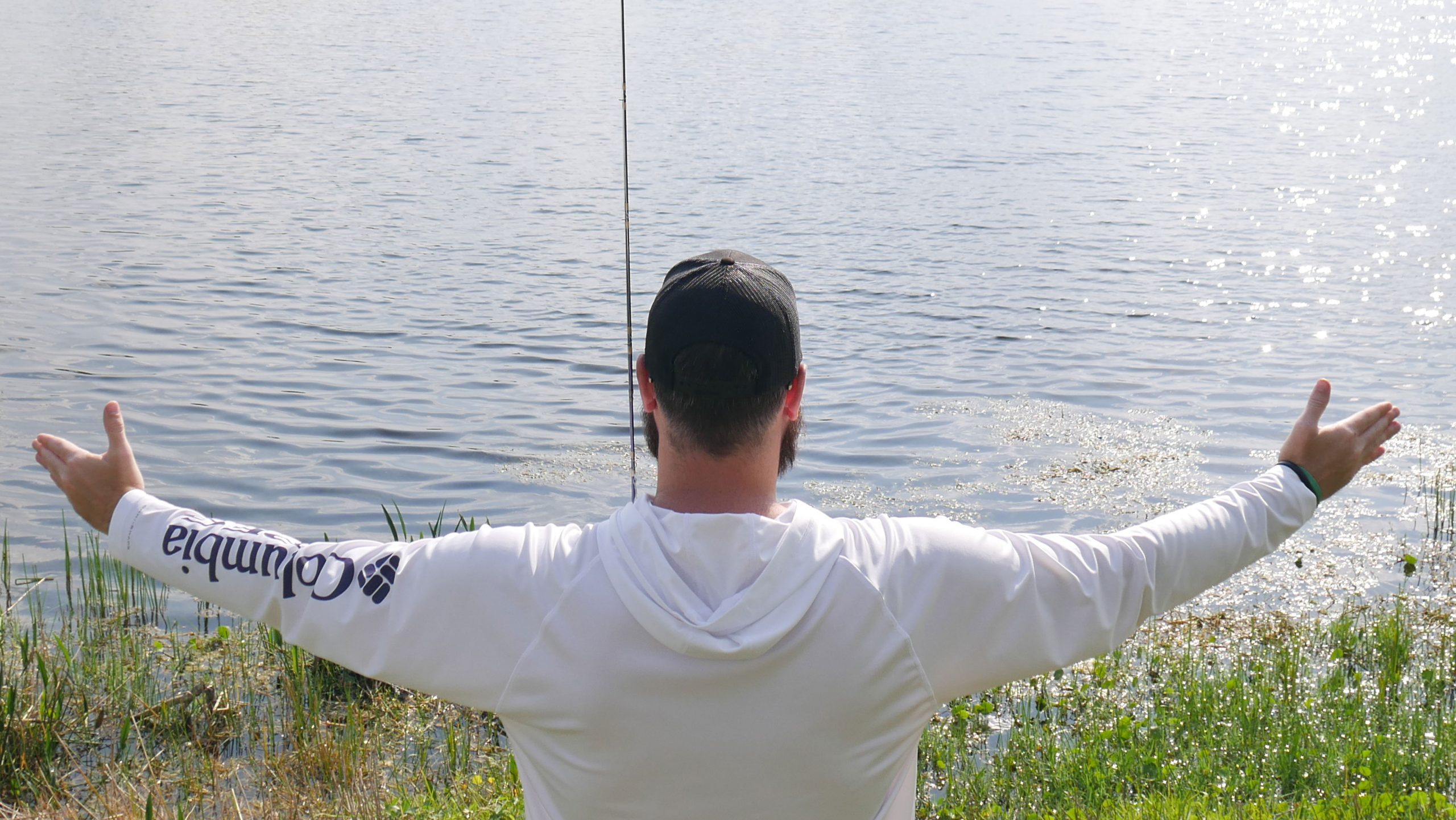
DISSECTING WATER QUICKLY
Fly fishing for largemouth bass calls for a tremendous amount of blind casting, so having the ability to quickly discover fish is essential.
Before ever hitting the water, pull up potential fishing venues on google maps. Take note of any points of interest- vegetation, docks, shallow flats, channels- and plan your day out accordingly. Being able to build and implement a plan is crucial to success, and it will help you quickly learn a new body of water.
While researching ahead of your trip is well worth your time, it simply cannot replace actual time spent on the water.
Dissecting water in real-time requires anglers to answer two questions as quickly as possible. First, what can’t I see? And second, where are potential ambush points?
Before you can properly pinpoint ambush points, you must identify any submerged cover or structure that may be out of your visual range. This is done by implementing “scout casts”, which are designed to help the angler gain knowledge of his surroundings.
To properly “scout cast”, work your casts along an invisible 180 degree plane, beginning at 0 and ending at 180. You don’t need to work every single degree, but make sure to throw 4-7 casts at varying degrees, completely working the water before moving on.
Don’t be surprised if one of your “scout casts” quickly turns into an eat. What this means is that you’ve confirmed an ambush point, a critical location where largemouths come to feed. Continue to throw in the same location until the bite dissipates, where there is one largemouth bass, there are typically more. If the spot does not produce again in 7-10 casts, it’s time to more on, for now.
Repeat this approach on all of your points of interests, and once you’ve exhausted all of them, go back and hit the same points again, starting at the first. Vary your flies, gradually increasing or decreasing things such as size, color, and stripping speed. You want to gain as much knowledge as possible and become as familiar as possible with each location
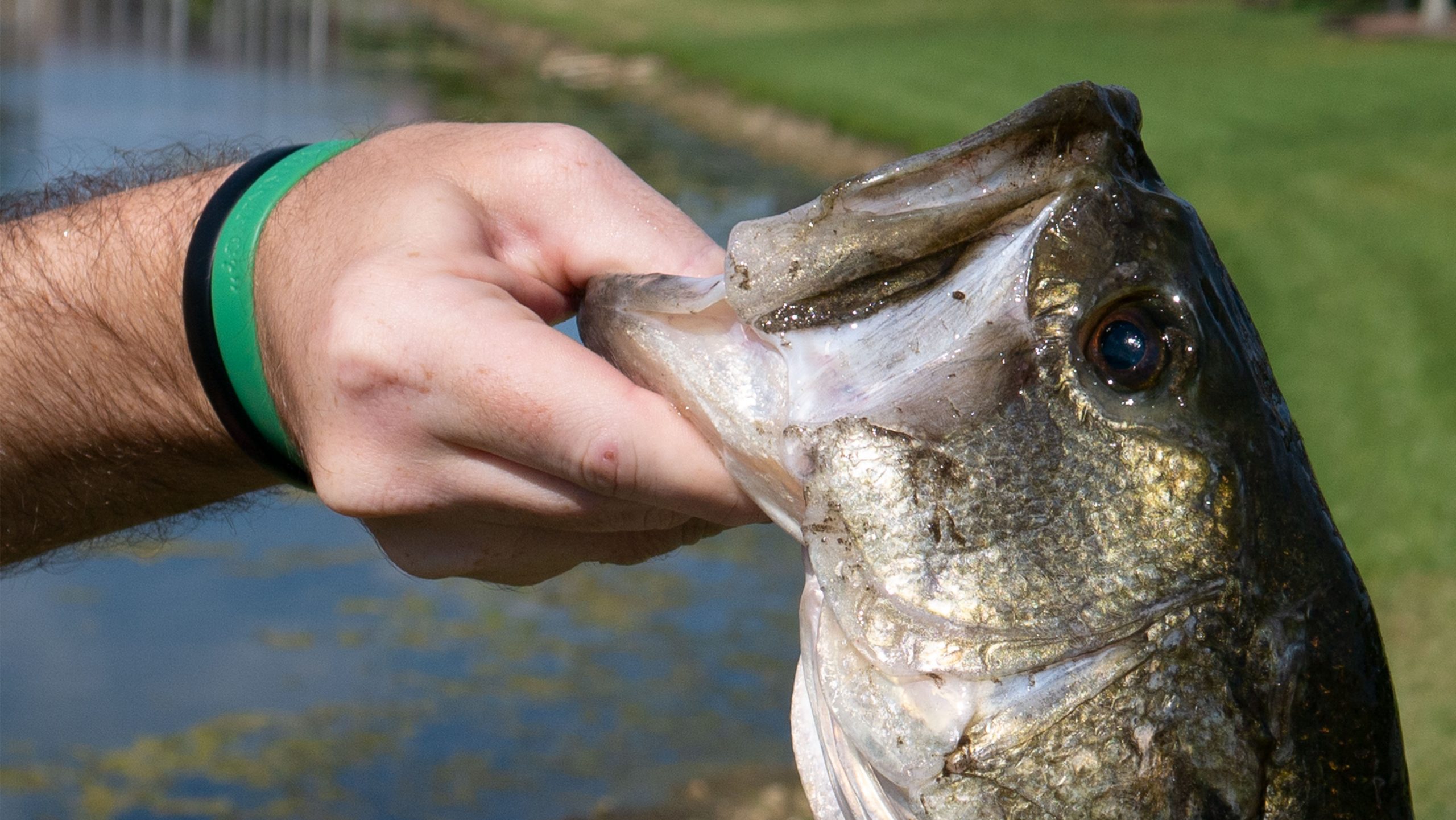
TAKING THE NEXT STEPS
Although all of the information in this article is essential to helping you catch bass, it’s ultimately designed to help you grow mentally as an angler while setting up the proper building blocks for future growth.
As your knowledge of the sport and the species grows with each new experience, it’s up to you as an angler to continue to push the envelope and seek out new understandings. While researching available prey items is crucial, the next step would be memorizing the spawning habits of potential prey items. Instead of identifying points of interest, identify what fry is available in what time of year. How about lunar phases?
When fishing, make sure to bring a journal to write down details such as time of day, weather conditions, successful flies, observed behavior, lunar phase, and anything else that comes to mind. The more detailed your notes, the better you will be able to recognize and predict patterns of behavior given multiple variables.
Don’t hesitate to use your voice recorder on your phone either, for some being able to listen to and later transcribe their experiences helps further their ability to learn.
Above all else, do not grow complacent. Once you’ve learned one body of water, it’s time to move on to the next and begin all over again. If you’re having consistent success on one fly pattern, see what you can do to improve it. Drop down line weights and leader strength, specialize your setup for distinct presentations. One of the many joys of fly fishing is constantly being able to fine-tune and tinker with your offerings and gear.
Keep challenging yourself, that is the only way you learn.
CONCLUSION
The true beauty, and borderline necessity, of fishing for largemouth bass is that they allow you to build skills that will later translate to other species, while also being readily available to nearly every angler. Any time spent on the water fishing for any species is valuable experience when building your fly acumen.
Largemouths offer anglers of nearly every skill level a chance to land a trophy without being too intensive. Many say that the “tug is the drug”, but largemouth bass are perhaps the easiest gateway. And once you learn lunkers, you are set to do some pretty outstanding things.

